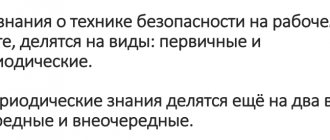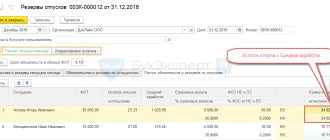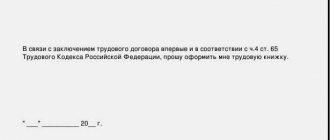Inventory is a check of the condition and compliance with the accounting registers of assets and liabilities of an enterprise; this is a mandatory procedure, the implementation of which, from the first to the final stage, is regulated by law. According to the Methodological Guidelines of the Ministry of Finance, an internal audit is preceded by an order to conduct an inventory. Today's review is dedicated to him.
In this article, you can find out in what cases it is necessary to carry out an internal audit and what is the object of attention of the audit commission, how to prepare a documentary justification for the audit, we will provide a sample for the order to conduct an inventory in 2021, which fully complies with the requirements of the Ministry of Finance.
Inventory in legislative regulations
The procedure for carrying out the activities that make up the inventory procedure is regulated by several regulations:
- Law of the Russian Federation dated December 6, 2011 No. 402-FZ “On Accounting”;
- Order of the Ministry of Finance of the Russian Federation No. 34n dated July 29, 1998 (as amended on April 11, 2018), which approved the Regulations on accounting;
- “Guidelines for inventory of property and liabilities”, approved by Order of the Ministry of Finance of the Russian Federation No. dated June 13, 1995;
In addition to the above-mentioned regulatory documents, the legislation prescribes that a business entity must include regulations for carrying out inventory activities in the accounting policy of the enterprise.
Causes
According to Order of the Ministry of Finance of the Russian Federation No. 34n of 1998, the manager’s order is drawn up according to the following reasons:
- before conducting the annual report;
- in the process of transferring fixed assets to third parties or new employees responsible for the property;
- after theft or intentional damage to fixed assets;
- as a result of emergency incidents that caused losses - fires, man-made disasters, etc.
In addition, the order provides the opportunity to resolve many issues, for example:
- provides data regarding the company being inspected;
- establishes the composition of the commission that will conduct the event;
- makes it possible to familiarize yourself with the list of property subject to inspection;
- indicates the reason for the recount;
- indicates the legal side of the process;
- provides inventory time frames.
Carrying out an inventory, in turn, provides a solution to many issues, initially - organizing information regarding the property on the balance sheet of an enterprise, obtaining reporting documentation for investors and shareholders.
How to issue an order?
The order has a unified form INV-22, intended for organizations with any legal form.
At the same time, the law does not oblige the use of this particular form; it is enough to develop your own free form of the order and include it in the company’s accounting policy.
In any case, the document must be drawn up taking into account the following points:
- name with number and justification;
- in the provided fields you need to enter the name of the organization, OKPO, OKUD, date of compilation;
- the main part of the order should indicate the type of inspection, the rationale for its implementation, the list of the commission headed by the chairman;
- a list of fixed assets subject to inspection, in which departments/divisions they are located;
- determine the period for conducting the inventory, indicating the start and end dates of the implementation;
- inspection purposes or reasons;
- the date of submission of reports on the results to the accounting department is indicated;
- certification of the document by the manager;
- registration of the order in a special journal;
- Next, all employees specified in the document should be familiarized with signature.
Download standard order form INV-22 – excel.
When conducting an unscheduled inspection
To conduct an unscheduled inspection, there must be a relevant case, for example, a change of person in charge or a transfer of property.
In addition, this procedure is carried out in order to study the integrity of the personnel and evaluate them for honesty according to a pre-approved secret schedule of management.
But in any case, it is necessary to formalize the process in accordance with legislative standards with the formation of an order using the same form No. INV-22.
The reason for carrying out an unscheduled inspection must indicate that the activity is being carried out, for example, based on the results of 3 months.
order when conducting an unscheduled OS inventory - excel.
Inventory: main aspects
The legislation draws the attention of business entities to three main aspects of inventory activities:
- timing of inventory;
- reasons requiring an internal audit;
- documentation of inventory.
Inventory deadlines
The period and frequency of the inventory depends on its type.
Mandatory (scheduled) inventory. The timing of its implementation is regulated by law and is focused on the reason for the internal audit. For example, an inventory before the annual report should be carried out at the end of the fourth quarter of the reporting year, when transferring property to third parties or dismissing a financially responsible person - on the eve of the event.
Voluntary (unscheduled) inventory. Carried out in connection with the reasons established by local regulations (order of the manager) and upon their occurrence. Such an inspection does not have an exact timing and is appointed by business entities at their own discretion.
Reasons for taking inventory
The legislator has established a list of cases subject to mandatory inventory. To them, incl. relate:
- preparation for the preparation of annual reporting;
- transfer of property between financially responsible persons (for example, upon dismissal of such a person);
- transfer of property rights to third parties;
- in connection with the theft of property, as well as force majeure - emergencies of a man-made or natural nature (explosions, fires, floods and other disasters);
- before drawing up the liquidation balance sheet.
In addition, business entities can expand the list of cases for conducting internal inspections at their discretion, having approved this by a local act.
Documents for inventory
The mandatory package of documents for an internal audit includes an inventory order, an audit schedule, inventory acts and inventories, a final record of inventory results, an order based on the results of the audit if inconsistencies are found between the fact and the accounting data.
Please pay attention! Since the legislation in clause 27 of Order No. 34n of the Ministry of Finance of the Russian Federation dated July 29, 1998 specifies the cases that fall under mandatory inspections of material assets of business entities, the purpose and reason for the inventory must be indicated in the order, as well as its format (planned, unplanned).
Further actions
The results of the inventory must be reported to the head of the company. If the products do not comply with the information specified in the documents, a local investigation is initiated. Based on its results, these decisions are made:
- Additional verification based on the results of the procedure. It is necessary to set deadlines for eliminating all found inconsistencies.
- Measures for the return of assets, the lack of which was discovered during the event.
- Documents obtained during the inventory go to the prosecutor's office for further consideration of the criminal act and identification of the perpetrators.
Specific decisions depend on the results. If no errors are found, then nothing needs to be done. If discrepancies are found, you need to identify the reason for their occurrence. For example, this could be an emergency, disasters, theft, or the actions of an unscrupulous person. That is, in a situation there may or may not be guilty persons. In the first case, the culprits are sought either by the enterprise itself or with the help of the police.
Inventory order: form
The inventory order is a mandatory document, so its form is standardized. This is a unified form No. INV-22 (you can download it here), approved by Resolution No. 88 of August 18, 1998 of the State Statistics Committee of the Russian Federation.
A business entity can issue an order for inventory in form No. INV-22, but can also draw up an administrative document in free form, reflecting all the data necessary for the inspection. The use of a free form of an inventory order does not contradict current legislation under two conditions:
- If the order includes all the mandatory information and instructions for conducting an inventory (indication of inventory activities, the purpose and reasons for the inventory, the composition of the inventory commission, the start and end date of the inspection, the date of submission of the inventory report);
- If the use of a free form of an order to conduct an inventory is provided for by the accounting policy of the business entity and it is provided for by the internal nomenclature of affairs.
When and why do you need an inventory?
This term is well known to all organizations whose property is numerous or whose work is related to trade. This is the name for checking the availability of material assets and assessing their condition. During an inventory, data from accounting documents is compared with reality. Ideally, the values on paper should exactly coincide with reality, but this does not always happen.
Inventory helps to identify missing valuables, record the fact of loss or improper storage. The range of problems that such verification solves is indeed very wide.
Types of inventory
Organizations conduct scheduled and unscheduled inspections. The planned one is carried out according to the schedule approved by the manager. Deadlines may vary from company to company. For example, stores conduct inspections every 1-2 months. Companies whose work does not involve the production and storage of a large number of property and goods have the right to limit themselves to 1 inspection per year.
It is planned to take an inventory before preparing a report on the results of the year. Unscheduled ones are associated with the appointment of new responsible persons who, upon taking up their duties, are obliged to check whether there are any shortcomings after their predecessor. Unscheduled accounting is also carried out after emergencies and thefts.
Form INV-22 - order to conduct an inventory
Inventories can also be divided into complete and partial. Their content follows directly from the name. During a full inspection, all property, all valuables, and all products of the enterprise are assessed. This is the type that is used when preparing the annual report. Partial ones are needed when you need to check only one warehouse or one category of goods. For example, if there was a fire at an enterprise that affected one workshop, a partial inspection is sufficient.
Based on the degree of coverage, inventories are divided into complete and selective. Solid ones are similar to complete ones and mean verification activities in all departments, warehouses, and structural units. Selective ones, as a rule, relate to a specific responsible employee. Such checks are relevant when a new specialist takes up a position.
Another type of classification is based on the method of implementation: natural and documentary. When in kind, property/products are counted and found in the documentation. During documentary, it’s the other way around: first they find valuables/goods in the documentation, and then check their actual presence.
Purposes of checking material assets
The main purpose of the inventory is to record the correspondence of information about the presence and condition of material assets from documents to reality. In simple terms, check if everything is in place and in proper condition. When the main goal is achieved, several additional tasks are solved:
- accurate accounting of the real amount of valuables;
- identification of losses;
- identification of violations of rules/storage locations;
- checking the quality and accuracy of document management;
- assessing the professionalism of individuals.
Inventory order: sample 2021
If the contents of the administrative document for carrying out inventory activities are brought into compliance with the requirements of the law, then the inventory order (sample 2021 is given below) must contain the following information:
- full name of the business entity;
- name of the document (Order), its registration number and date of publication;
- an order to carry out inventory activities, indicating the units where they will be carried out (for example, a general inspection of all units, or a specific warehouse or unit);
- the purpose of the audit is to take an inventory of tangible assets, fixed assets, inventories, accounts receivable, etc.;
- the composition of the audit commission and the appointment of the Chairman of the commission (when external auditors are involved in activities, their role in the commission is indicated. For example: “Ivanov I.I. – member of the commission, invited auditor”);
- timing of the inventory, with an exact indication of its start, end, and date of submission of the Inventory Report;
- information about the person signing the order - position, surname, initials.
We offer you a free-form sample of an inventory order.
What is needed for the procedure
To do this, you must have the following documents:
An order signed by the manager to begin the inventory- Reports of persons responsible for the presence or absence of property
- A document containing a comparison of inventory data with information specified in the accounting report
- List of property condition inspection results
Types of warehouse inventories
There are the following types of inventory of goods in a warehouse:
- Selective inventory - during it, the presence of only a certain part of material assets is checked.
- Continuous (complete) inventory – absolutely all valuables in the warehouse are checked.
A complete inventory must be carried out in the following cases:
- during reorganization or liquidation of a warehouse;
- before preparing the financial statements generated every year;
- when moving the warehouse to another location;
- if any emergencies occur;
- if the worker carrying the mat is replaced. liability, as well as when more than half of the warehouse workers leave the team;
- if damage, theft or misuse of assets has been established.











